Table of Content:
Note is a web application for taking notes using markdown.
Features Include:
-
Authentication system: The user must register and login for using this app.
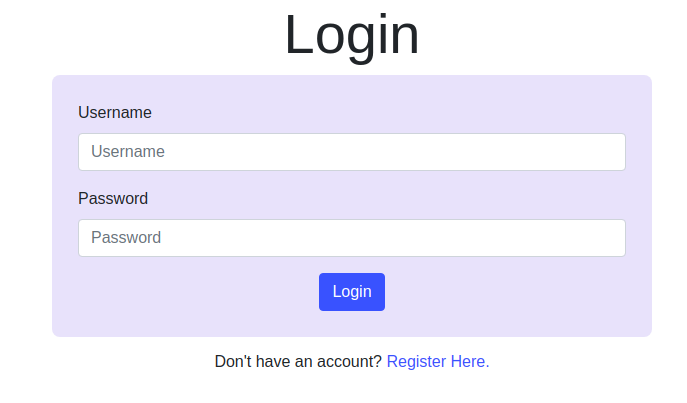
-
Home page: The homepage of the app contains all the unarchived note, only a summary and label are shown on the homepage.
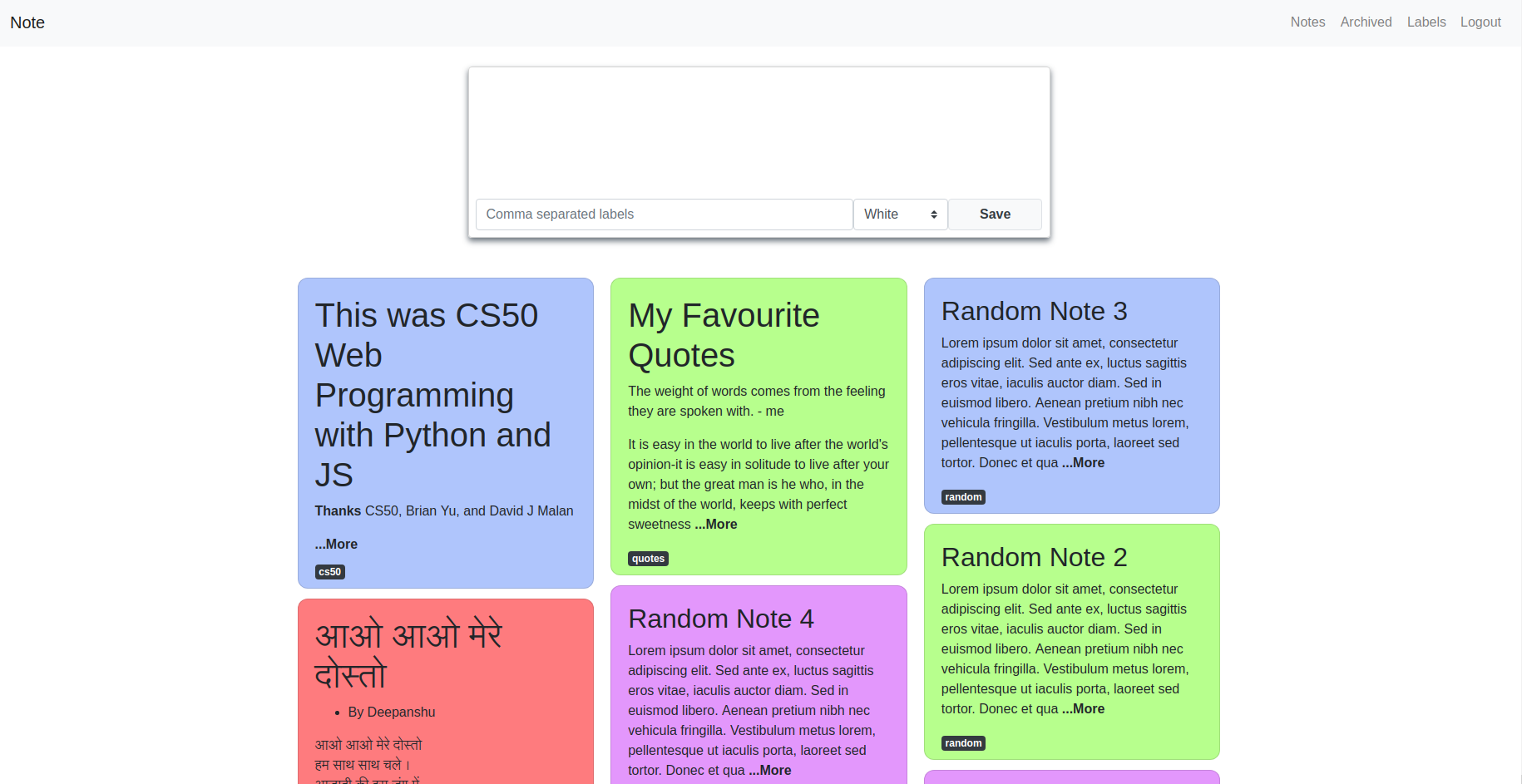
-
Note creation with Markdown: User can create notes through the homepage.
- The note will support markdown for formatting.
- The user can optionally include labels and a color for every note.
- If the user does not provide any text, the note will note be created.
-
Viewing a note: User can view a note by clicking the note summary.
-
This will present the complete note in proper formatting.
-
User can also edit, archive, and delete the note from here.
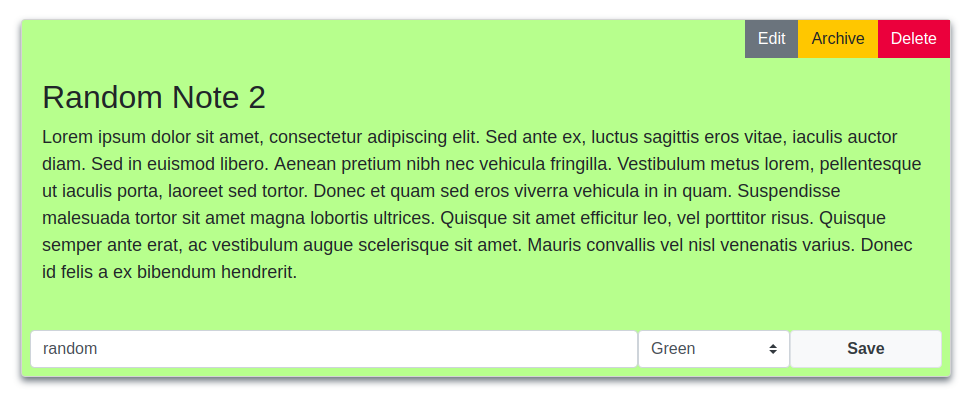
-
-
Editing a note: User can edit a previously written note by clicking the edit button in note view.
- Clicking the editing button will change the note back to markdown, where user can edit the note, change the labels and color and save it again.
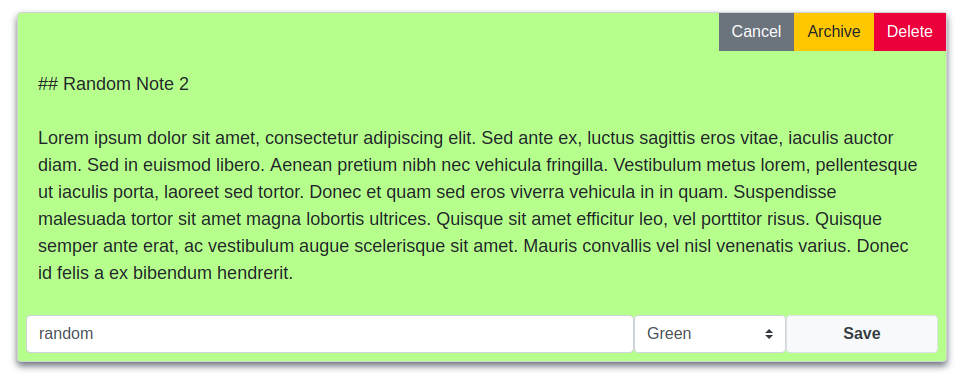
-
Archiving a note: User can archive a note by clicking the archive button in note view.
- Clicking the archive button will archive the note, and the user will be redirected to the home page where the note no longer exist.
- Archived notes can be viewed in archived section.
-
Deleting a note: A note can also be deleted when no longer needed.
- Deleting a note will redirect user to home screen where a message of deletion will be displayed for 3 seconds.
-
Viewing Labels: The user can view all the labels created using the Labels Page.
- Clicking on a label will show all the notes with that label.
- 'No Label' is shown for labels with no label.
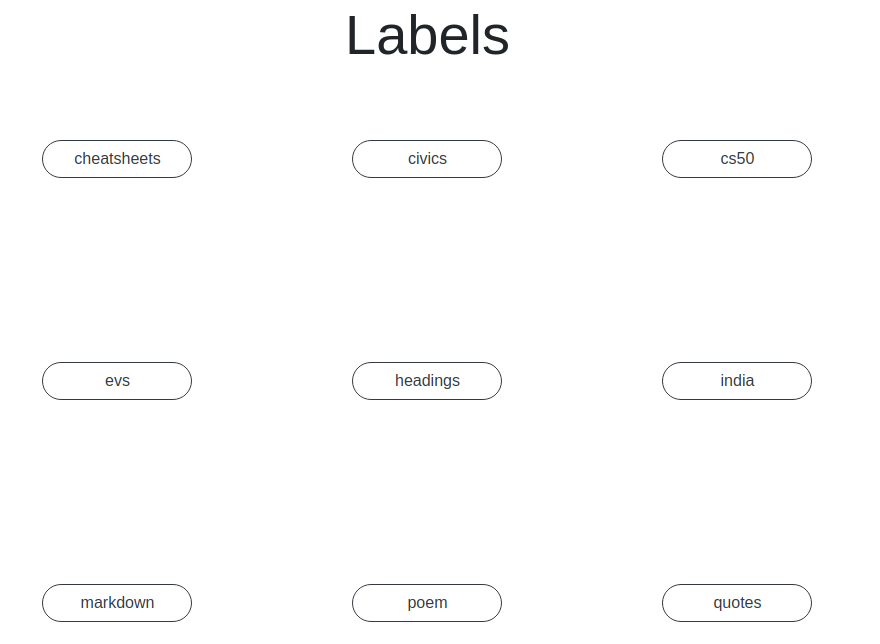
- Python with Django for Back-end.
- JavaScript for front-end.
- HTML
- CSS with Bootstrap.
- Postgres
-
Project Name: capstone
-
App name: note
-
Back-end Files: In note directory
- urls.py: Contains urls for the pages and api endpoints used in the app.
- views.py: Contains Django views for rendering templates and performing API operations.
- models.py: Contains models for the app and serializer functions for models.
- User
- Labels
- Note
- forms.py: Contains a Django model form for registering a user.
- admin.py: Contains configuration for /admin panel.
- tests.py: Contains test cases for models and views.
- test-pages.py: Contains test for login and registering web page.
-
Front-end Files: In template/note and static directories.
- Templates:
- layout.html: Contains the HTML layout for all pages.
- index.html: Contains all the 'sections' that are generated with JavaScript.
- login.html: Contains a form for login and JS for validating the form on client side.
- register.html: Contains a form for registering and JS for validating the form on client side.
- Scripts:
- main.js: Contains events for navigation and events for creating, editing, deleting, and archiving a note.
- newnote.js: Contains event handler for creating a new note.
- notes.js: Contains functions for loading and displaying notes and note summaries.
- editnote.js: Contains functions for editing, archiving, and deleting a note.
- labels.js: Contains functions for loading and displaying all the labels.
- noteutils.js: Contains functions for changing color of notes.
- Templates:
-
Extra Files: In root folder - capstone
- README.md: This file you are reading, contains information about project.
- requirements.txt: Contains dependencies.
- README.assets: Folder containing images used in README.md
-
Get summaries for all notes:
- endpoint:
note - method:
GET
[ { 'noteId': 0, 'username': 'username', 'text': 'Note text', // First 300 Characters 'color': 'red', 'labels': [label1_dict, label2_dict], 'isArchived': true, 'datetime': , 'Oct 16 2020, 06:26 PM', }, { 'noteId': 1, 'username': 'username1', 'text': 'Note text', // First 300 Characters 'color': 'blue', 'labels': [label1_dict, label2_dict], 'isArchived': false, 'datetime': , 'Oct 16 2020, 06:26 PM', } ] - endpoint:
-
Save a new note in database:
- endpoint:
note - method:
POST
{ 'text': 'Note Text', 'color': 'red', 'labels': ['label1', 'label2'], } - endpoint:
-
Get a full note with an id:
- endpoint:
note/edit - method:
GET
{ 'noteId': 0, 'username': 'username', 'text': 'Note text', 'color': 'red', 'labels': [label1_dict, label2_dict], 'isArchived': true, 'datetime': , 'Oct 16 2020, 06:26 PM', } - endpoint:
-
Edit a note with an id:
- endpoint:
note/edit - method:
PUT
{ 'noteId': 0, 'text': 'Note Text', 'color': 'red', 'labels': ['label1', 'label2'], } - endpoint:
-
Delete a note with an id:
- endpoint:
note/edit - method:
DELETE
{ 'noteId': 0, } - endpoint:
-
Archive/Unarchive a note:
- endpoint:
note/edit/archive - method:
PUT
{ 'noteId': 0, } - endpoint:
-
Getting all labels:
- endpoint:
labels - method:
GET
[ { 'labelId': 0, 'username': 'username', 'label': 'label1', }, { 'labelId': 1, 'username': 'username', 'label': 'label2', } ] - endpoint:

